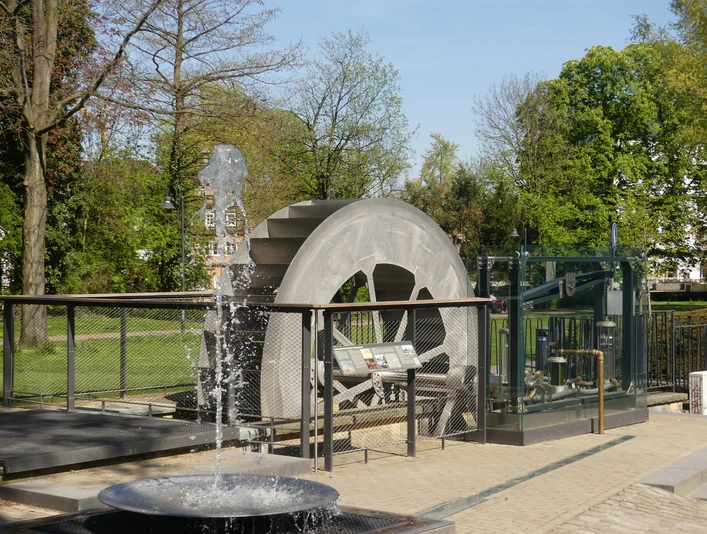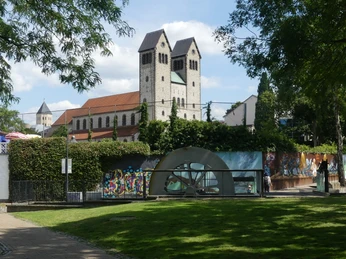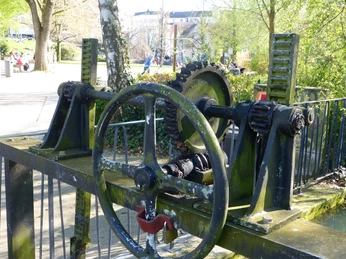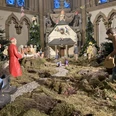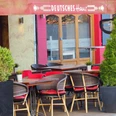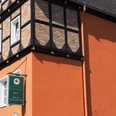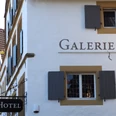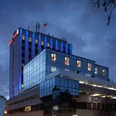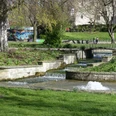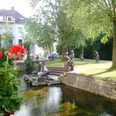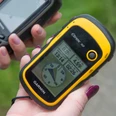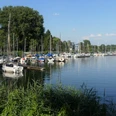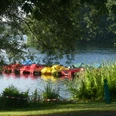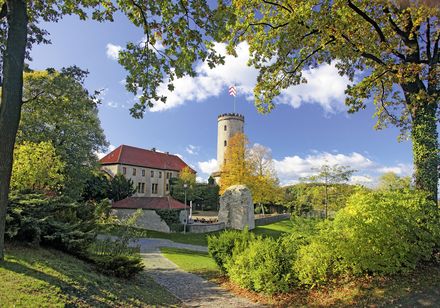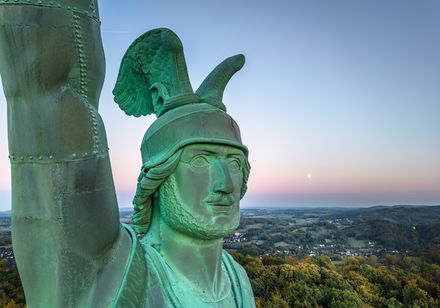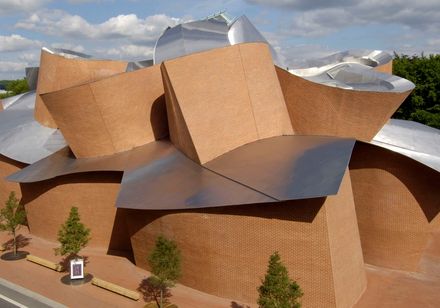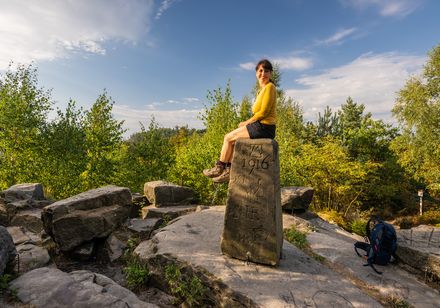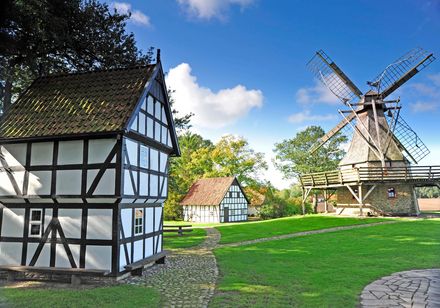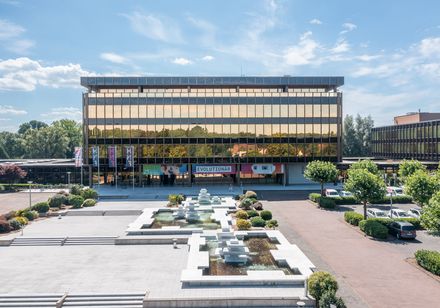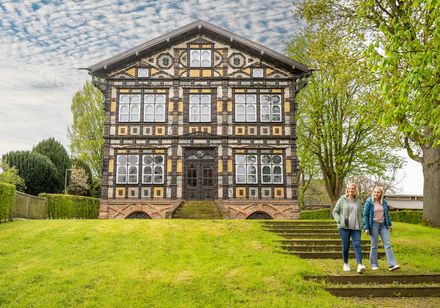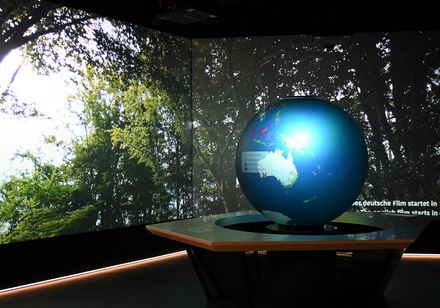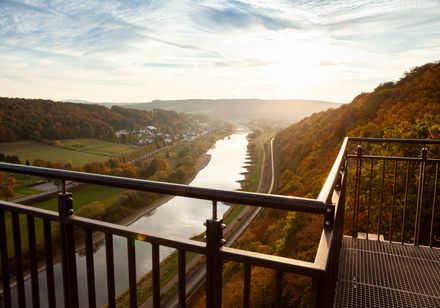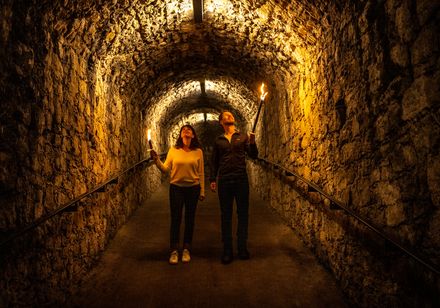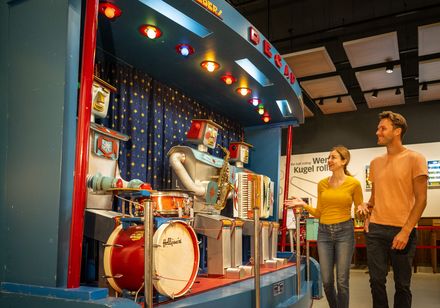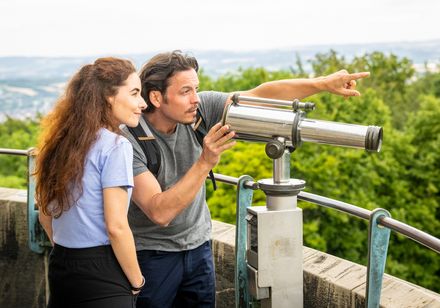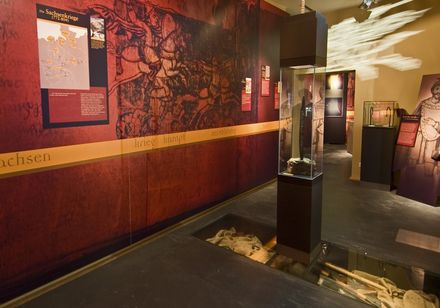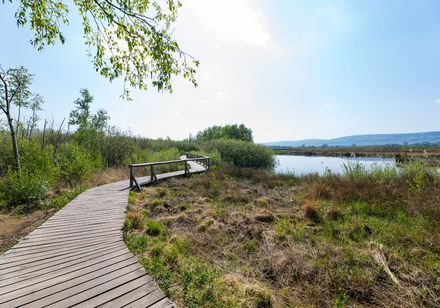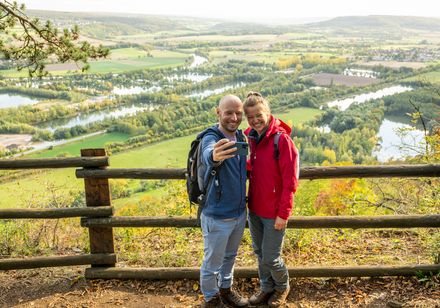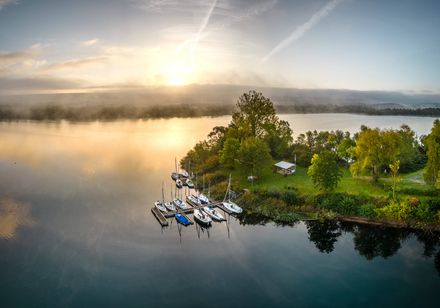In those days, waterworks were technical installations that could artificially distribute water. The Pader water was pumped through pipes from the Pader spring area into water storage basins in the city - so-called "Kümpe". This meant that Paderborn had its first public water supply in the 16th century, which lasted until the 10th century. In addition to the Liboriuskump am Kamp, two old Kümpe still exist today in front of the town hall and the Franciscan monastery.
The heart of the functional model is a specially constructed stainless steel water wheel with a diameter of 4.30 meters and a weight of 2.9 tons. The associated piston pump is also unique. It is driven by the water wheel as it once was and can pump around 100 liters of paddle water per second uphill. The functional model of the water art was built in 2017 on behalf of the "Freunde der Pader e. V." association, which spent more than 100,000 euros on it.
Good to know
Openings
Payment methods
Directions & Parking facilities
Take the A 33 freeway to the Pad.-Zentrum or Pad.-Schloß Neuhaus exit; then head towards Paderborn city center. Stay on the inner ring road (Innenstadtring) in the direction of PaderHalle or Maspernplatz (if necessary, follow the parking guidance system). Turn into Maspernplatz via Hathumarstraße.
Parking:
Parking for cars is available at Maspernplatz on the edge of Paderborn city center (destination address for the navigation system: Heiersmauer 45, 33098 Paderborn). There are usually plenty of parking spaces there. Tip: Buy a reasonably priced day ticket!
An alternative is the Neuhäuser Tor parking garage, which you will pass on the way to Maspernplatz as described above.
Information on other parking options in the city center and tariffs: www.asp-paderborn.de.
Public transportation:
Take the city bus lines 1, 2, 3, 4, 7, 8 (PaderSprinter) to the "Rathausplatz" stop.
Further information on how to get there by city bus is available at www.padersprinter.de or by telephone on 05251 6997222.
License (master data)
Nearby
